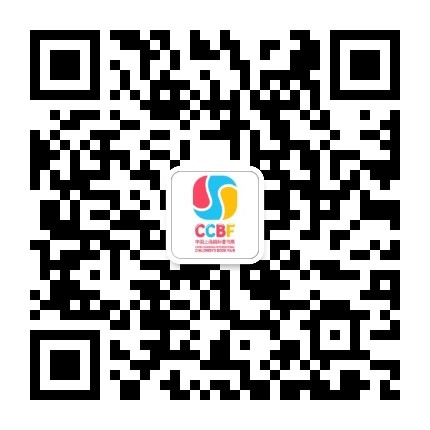Last November, Stefano di Cristofaro (Caracas, 1991) was announced as winner of the 2019 Golden Pinwheel People’s Choice Award, a distinction we are very fond of at CCBF. Unlike the Grand Awards and the Special Mentions, the People’s Choice Award is not based on the Golden Pinwheel Jury’s decision but one the votes of all the visitors and followers of the fair. With the illustration series Conejo y Conejo (Rabbit and Rabbit), Stefano achieved a landslide victory by collecting 1,000 votes more than his closest competitor. It proves that simplicity, friendship and humour are successful ingredients in an illustration competition!
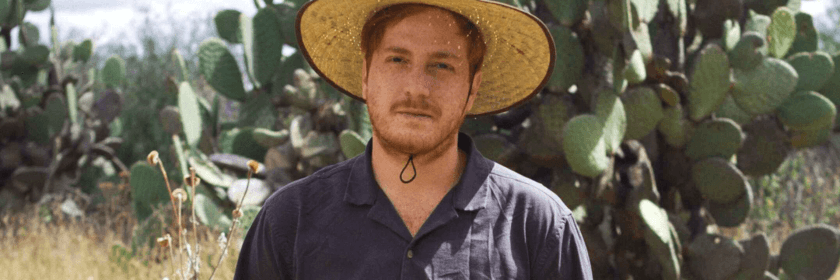
Stefano Di Cristofaro ( © Maxi Montaño)
We wanted to know more about Stefano and his friendly rabbit characters. So, we took a (virtual) plane across the ocean to ask him a few questions on his background and his work. Ready?
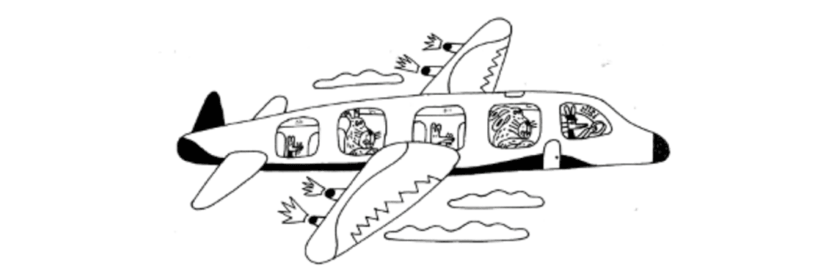
© Stefano Di Cristofaro
Where are you from? And what road did you take to become an illustrator?
I was born in Venezuela of a Colombian mother and an Italian father, who migrated to Venezuela when it was still a prosperous country. A few years later, it was my turn to become an immigrant as the political and social situation in Venezuela became unsustainable. I first moved to Santiago, Chile and now live in Mexico City.
I am not really sure of how I became an illustrator, but I’ve loved drawing as far as my memory goes. Already as a child, I was interested in pictures, drawings and all kinds of graphic expressions. I was drawn by disk cover design, animated cartoons, paintings in museums… I grew a fascination for all this, which took me to study visual communication at the Professional Institute of the University of Caracas.
With five illustrations taken from the book Conejo and Conejo, you won the People’s ChoiceAward in the last Golden Pinwheel Young Illustrators Competition. This means your works seduced the fair’s professional visitors and exhibitors as much as it caught children’s eyes. Before the book gets published in China in a few months, can you unveil some elements of the story with its future readers?
I am so happy that this book got the People’s Choice Award!
My idea was to create characters that would easy to recognise and easy to fall in love with. Conejo and Conejo (Spanish for Rabbit and Rabbit) meet by accident on the bank of a river and they become best friends. One loves dancing while the other is a little shy. Conejo doesn’t always know if Conejo is happy or sad. Everything leads us to think they will be together forever until one day, an argument breaks out between the two friends. Conejo runs East and swears to the Eastern Mountain he will never see Conejo again. At the same time, Conejo runs West and swears to the Western Mountain he is not to see Conejo ever again…

© Stefano Di Cristofaro
What did you particularly like in this text written by Isa Saturno? What is the message behind the story?
What I like best about it is the mysterious encounter between the two rabbits through a mirror, in which they look and discover each other. It is a bit like seeing yourself through the other—a revealing exercise that pushes you to think over who you really are, what you know and don’t know about yourself. It all sounds very simple, but it carries a lot of questions and dilemmas, some small and some bigger.
Another thing I really like about the story are the mice that appear on every page of the book. They are secondary characters that come around Rabbit and Rabbit all through the story. They are silent but have a very important role in the story that I will let the readers discover.
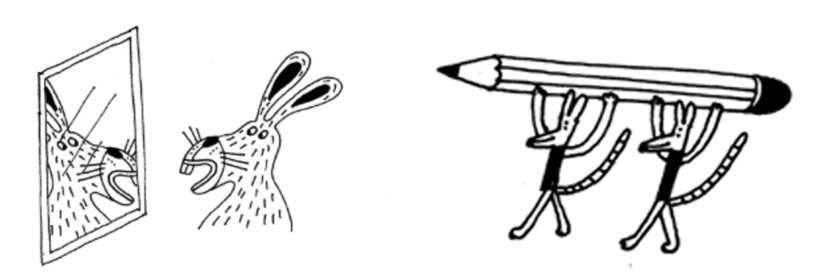
© Stefano Di Cristofaro
It surely isn’t easy to build two characters that are so much alike and are so different at the same time. How did you achieve this?
My first approach was to play with mirrors. I started drawing a rabbit. Then I drew the rabbit again, this time watching his own reflection through a mirror. In a third step, I started introducing minor differences—some of them nearly imperceptible—in their morphology. As I was building the characters, it was very important to me that their personality would be easy to tell apart. So, I decided to create very simple images with clear lines and well-defined shapes, as to distinguish their gestures as much as possible. To help me in this complex process, I took as reference two important children’s literature classics. One is Willy the Wimp by Anthony Browne, the other one is Bernardo y Caneloby Fernando Kran. I also took a lot from David McKee’s books to create the two Conejos.
It is great to remember there are important books in children’s literature that bring us big questions through apparently very simple means.
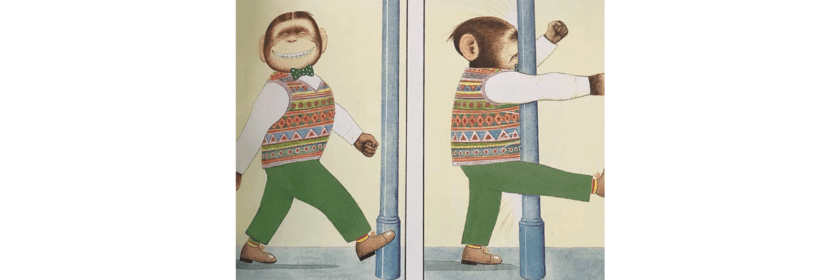
Willy the Wimp by Anthony Brown (© Anthony Browne/Walker Books)
In Conejo y Conejo, you deliberately chose a very simple style with clear lines and plain colour shades. But your other works show an impressive array of techniques and styles. How do you adapt your style to each project? Is there a guiding thread that draws all your works together despite their apparent diversity?
I do love experimenting and exploring different techniques. I support the idea that every book must have its own voice.
Until now, I have only illustrated books written by others and I have worked on an incredible variety of book projects, including a collection of terror stories from Venezuela’s folklore and a book Japanese architect Shigeru Ban. In each case I try to find the visual language that best matches with the story, hence the versatility and diversity in my work and my identity. In the end, I have to say I love changing, testing and investigating! I also like finding out when I am repeating myself or when I am really innovating in a book. It is about finding a little bit of myself in each book. I must have something of a “conejo” after all
Apart from children’s publications, do you illustrate for other media?
What really brings me satisfaction is illustrating books for young readers but once in a while I do other things, I have undertaken some design jobs for clothes, for shops and for disk covers. This must have something to do with the versatility of my styles.
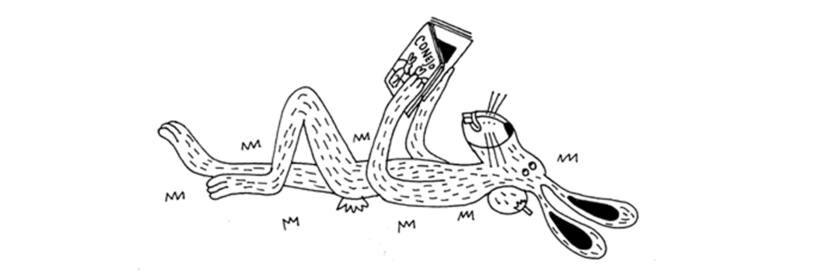
© Stefano Di Cristofaro
What is next in your pipelines? Any new project?
There are a couple of book projects that I hope will see the light in 2020. One is called Think like Shigeru Ban, about the Japanese architect I mentioned earlier. The other one is an adaptation of Little Red Riding Hood called Little Creole Riding Hood, with texts by Venezuelan writer Aquiles Nazoa.
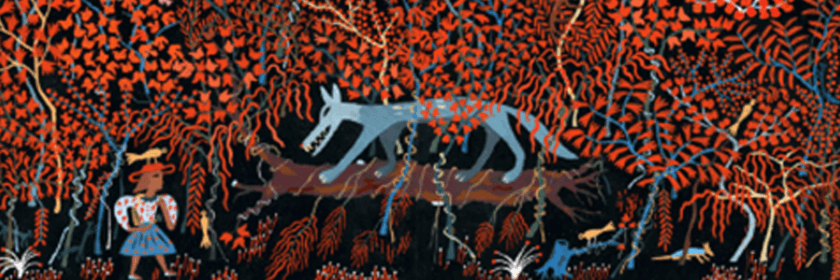
Little Creole Riding Hood(© Stefano Di Cristofaro)
The 2020 Golden Pinwheel Young Illustrators Competition is currently open to entries. Don’t miss your chance to see your artworks shine at the next edition of the Shanghai International Children’s Book Fair. Read more about it here.


